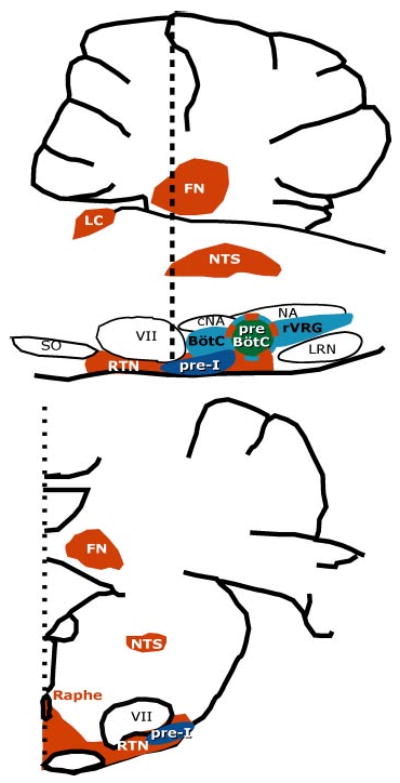Figure 1.

Respiratory premotor, putative rhythmogenic, and central chemoreceptor locations in the rat rostral medulla and cerebellum. (Top) Parasagittal view. (Bottom) Transverse view at the caudal level of the facial nucleus (vertical dotted line at top) (modified from Nattie 2000 and Gray et al. 1999). Blue areas in the ventrolateral medulla are the principal location of respiratory bulbospinal premotor neurons that project to phrenic, intercostal, and abdominal motoneurons, which drive muscles of the respiratory pump. The preBötzinger Complex plays a critical role in rhythm generation and central chemoreception. The pre-I neuron population, which may also play a role in rhythmogenesis, appears to be located ventral and rostral to the preBötC with many neurons close to the ventral surface. Red areas represent regions that play a role in central chemoreception. See text for details. Abbreviations: FN, fastigial nucleus; LC, locus ceruleus; NTS, nucleus of the solitary tract; VII, facial nucleus; rVRG, rostral ventral respiratory group; NA, nucleus ambiguus; cNA, compact division of the nucleus ambiguus; LRN, lateral reticular nucleus; RTN, retrotrapezoid nucleus; SO, superior olive; BötC, Bötzinger complex; preBötC, preBötzinger Complex.
